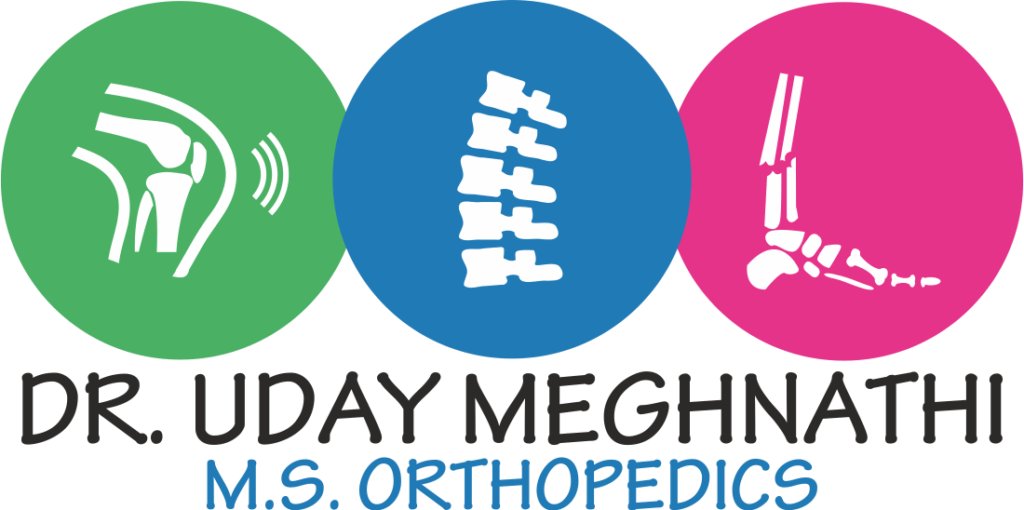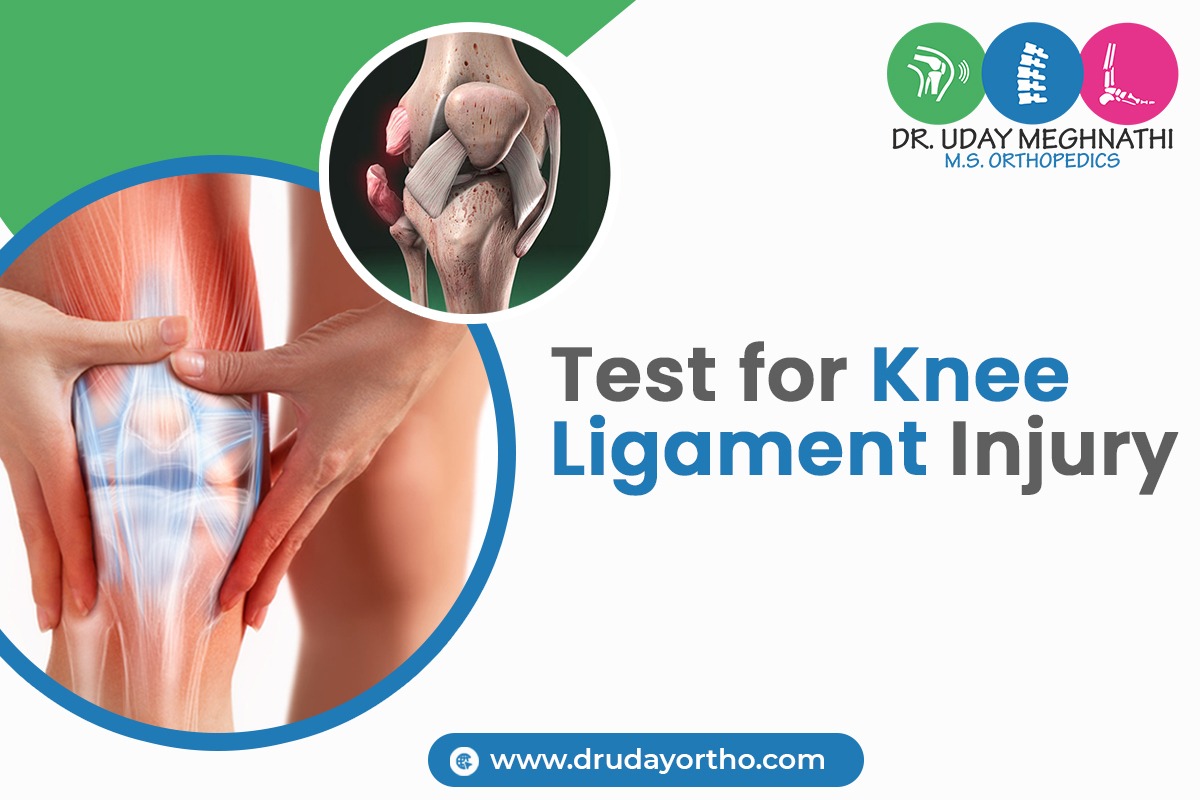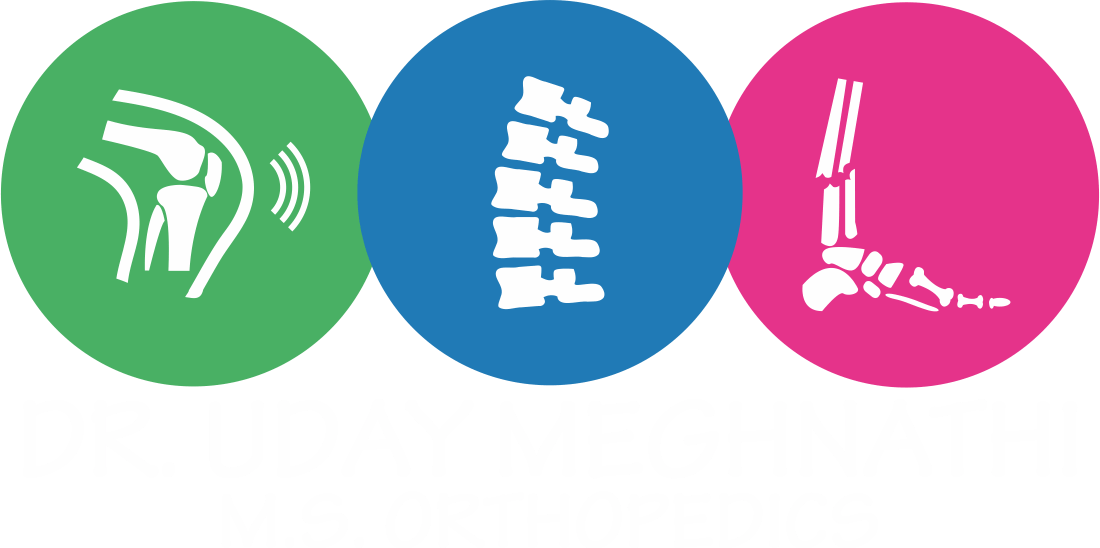Joints are commonly injured and are highly susceptible to arthritis, with the knee being the common source of concern. The knee ligament tests involve putting manual pressure on the ligaments of the knee to determine whether the pain in the knee is due to a tear or sprain. The test for knee ligament injury includes anterior drawer, valgus drawer, varus stress and posterior drawer test. In this blog, we explore the different tests for knee ligament injury & what it can reveal and how to test for knee ligament injury.
Diagnostics Test for Knee Ligament Injury
➤ Anterior Drawer Test
The Anterior Drawer test is conducted to inspect whether the movement between the femur (thigh bone) and the tibia (the larger bones of the lower leg) is within the adequate or normal range. The Anterior Cruciate Ligament (ACL) prevents the forward slipping of the bone down the thigh bone.
1. Procedure of Anterior Drawer Test: The test is performed by making the patient lie on the back with the knee bent at a 90-degree angle, and the foot is placed on the table. Dr.Uday Meghanthi, a top knee specialist in Vadodara, is renowned for his expertise and precision in diagnosing knee issues using the latest methodologies. His comprehensive treatment plans offer the best chance for recovery.
2. Indication of the Test: If there is excessive motion of the tibia under the femur, it can suggest the ACL is torn.
➤ Posterior Drawer Test
This is another knee ligament injury test that assesses the Posterior Cruciate Ligament (PCL) stability, which prevents the shin bone from slipping backwards underneath the thigh bone. The Posterior Drawer test is done to evaluate whether the movement of the tibia in relation to the femur is normal or not.
1. Procedure of Posterior Drawer Test: The test is performed by making the patient lie on the back with the knee bent at a 90-degree angle, tilted outwards at a 45-degree angle, and placing the foot on the table. The doctor holds the front lower leg below the knee and puts pressure on it.
2. Indication of the Test: The tests suggest whether the tibia moves backwards over the normal range, which means there could be a PCL injury or tear.
➤ Valgus Stress Test
Valgus stress or abduction stress test is used to determine if the Medical Collateral Ligament (MCL) is intact or not. This involves assessing the gaps between the tibia and femur in the inner side of the knee joint. MCL provides stabilization and prevents it from splaying too far inward.
1. Procedure of Valgus Stress Test: The test is performed by making the patient lie on the back with the knee bent at a 30-degree angle, a bolster placed under the knee straight and the leg placed flat on the table. At the best orthopedic hospital in Vadodara, while performing the test, the patient’s ankle is held with one hand and the other thigh by the other. Later, gentle pressure is applied, tugging the ankle outward.
2. Indication of the Test: An MCL injury or tear is suggested in case the knee gaps on the inner portion of the joints are above normal or an audible ‘clunk’ sound is heard.
➤ Varus Stress Test
The Varus Stress or adduction stress test assesses the collateral Ligament (LCL) stability. The LCL stabilizes the outer knee, prevents it from splaying forward, and protects it from impact. The reason for the Varus Stress test is to evaluate whether LCL is completely intact by checking for gaps between the tibia and femur on the outer side of the knee.
1. Procedure of Valgus Stress Test: The test is performed by making the patient lie on the back with the knee bent at a 30-degree angle and a bolster placed under the knee for support. The doctor holds the ankle with one hand and places the other on the inner side of the knee. Then, put gentle pressure, tugging the angle forward.
2. Indication of the Test: If the knee gap in the outer portion of the knee joint is more than normal, that case suggests an LCL tear or injury.
Top Diagnostics Test for Knee Ligament Injury
Knee ligaments injuries can cause chronic pain and instability and interfere with daily routine activities. By choosing Dr.Uday Meghnathi, the top orthopedic doctor in Vadodara, you can access an expert with years of experience in ligament injuries. His treatment plan, which includes accurate diagnosis and a core focus on managing pain and rehabilitation, offers hope for a fit and healthy life. Whether you are looking to prevent sports injury or are suffering from an ACL injury, book an appointment today and regain functionality.
Read more:- Knee Injury Types Recovery Steps


